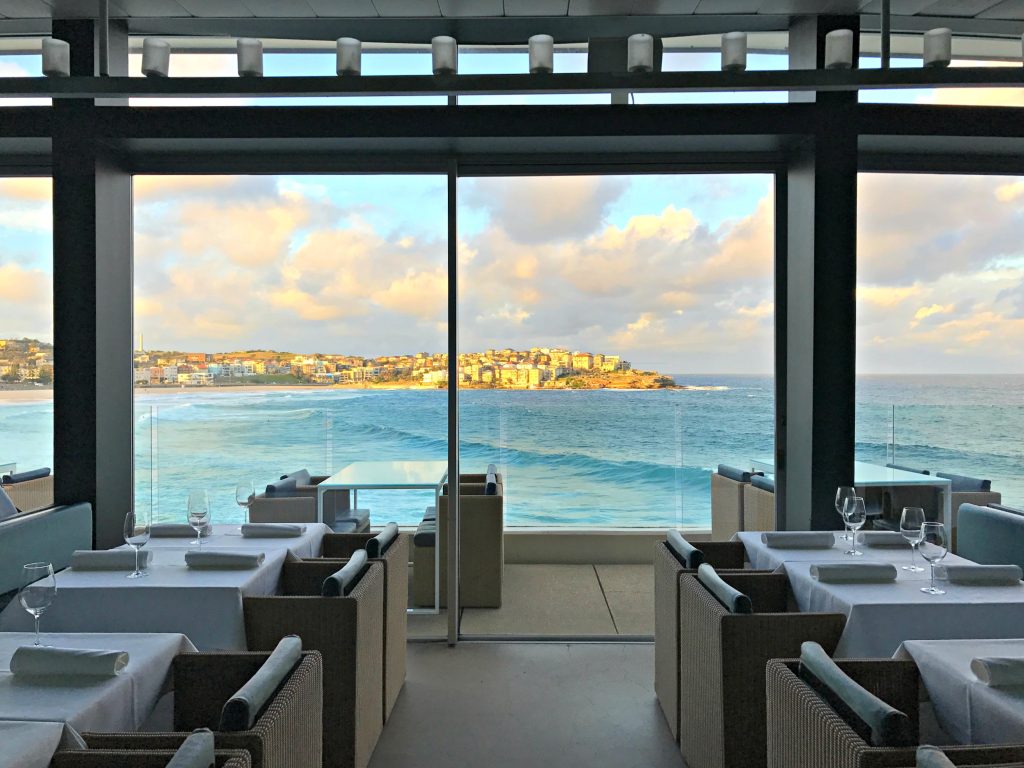Luxury and Sustainability
Usually these two words aren’t used in the same sentence, especially when describing high-end goods. So often, it seems things are either sustainable and lack the quality, beauty and durability we expect, or they are luxurious and seem wasteful, expensive and extravagant. I was blown away by the mindful presence of both at John Hardy’s workshop in Bali. Follow me down the bamboo lined path to the creative world of John Hardy.
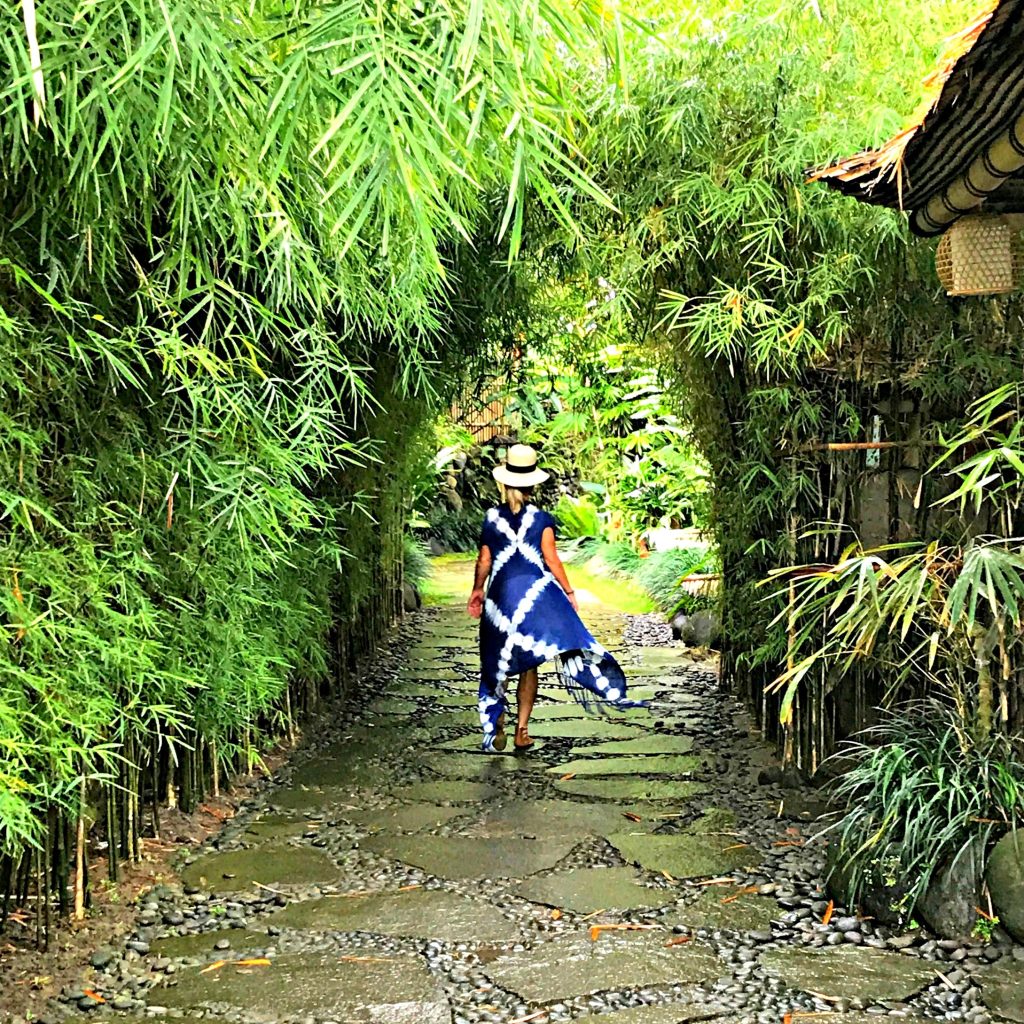
Like Jim Thompson in Thailand, John Hardy has made a profound, legendary impact in Bali, while creating a luxury brand known worldwide. Canadian born John Hardy established his workshop in Bali in 1975 after visiting the island and being inspired by the Balinese culture and tradition of jewelry-making. He spent time learning the methods and techniques and applied a new approach to those age-old traditions.
The John Hardy complex, including the workshop, showroom and outdoor dining room, was built in 1996 and is a beautiful testament to his mission and philosophy and stands as a model for conscious living and working. If the company were to ever fold, the buildings could easily be removed, recycled and consciously disposed of, and the land could continue to provide food for the people without damage to the environment. Set amidst farms and rice paddies, thought has gone into everything from the jewelry, to the buildings, to the environment, to the people. It is hard to wrap your head around how much intention and inspiration has gone into creating this superior brand, building this low-impact business, caring about the people who create and buy the jewelry and conserving the land. I have never seen a more earth conscious, quality conscious, people conscious brand.
Everything is made by hand from design through final production. The eight-step process begins in the design studio where artists and designers create design sketches for new pieces. Not a single computer is used. The final designs are even painted by hand with gouache or watercolor. Wax molds are made and then carved by hand, absolutely no machinery is involved at John Hardy. It’s an example and display of the cultivation, protection and beauty of pure human talent and skill at work, and it’s surprising they have held to this model with the amount of volume that comes from the workshop. And yes, it is so hard to believe, every single piece comes from this humble looking workshop in the rice paddies. In fact, when we pulled up, aside from the security guards protecting the property, I thought, is this it? They haven’t compromised or cut corners to shave time off the process to speed up production, and it was refreshing to see humans creating with their hands, instead of computers or machines. For this reason, each piece is essentially a one of a kind, with tiny differences created by the human hands that have made them, while maintaining the brand consistency.
There are no goals for the artisans to meet at John Hardy, except pure quality, and there aren’t a set number of pieces they must turn out each month, no deadlines, etc. John Hardy doesn’t want the process rushed. Each piece takes however long it takes for the artisans to make, to insure the quality isn’t rushed. Each piece is painstakingly critiqued by individuals in quality control who look for imperfections before the piece is ready to be sold. The entire workshop is a testament to John Hardy’s belief in the quality and craftsmanship of each piece by the artisans. The company believes in the transfer of creative energy from the artisans during design and creation passed down to the wearer. All the silver used is reclaimed and comes mostly from the inside of discarded electronics. All the gemstones are ethically sourced and are set by expert gemologists in Thailand. The creative process and production are simply mesmerizing. Photo credit: John Hardy
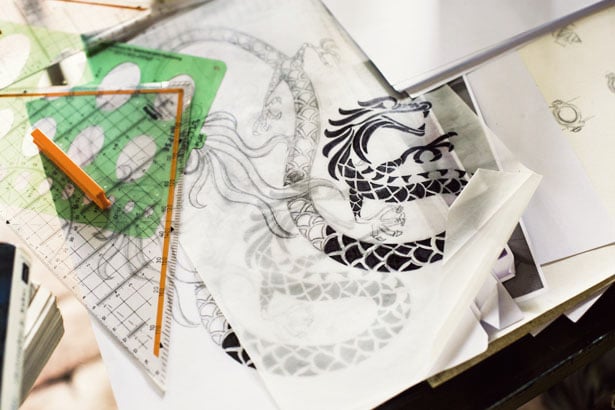
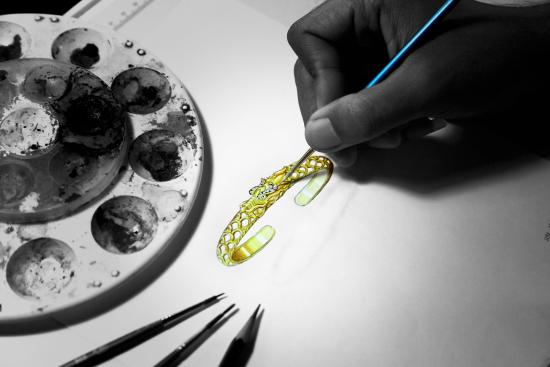
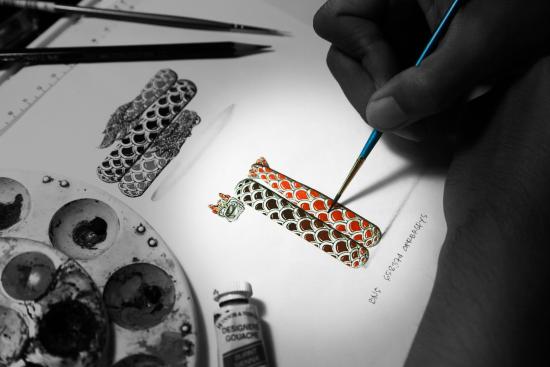
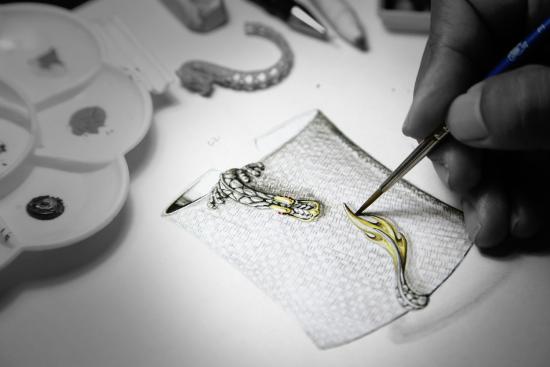
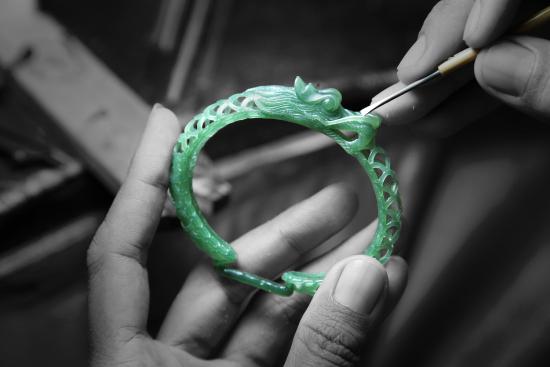
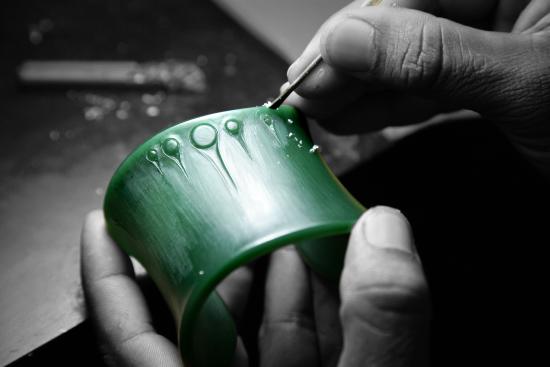
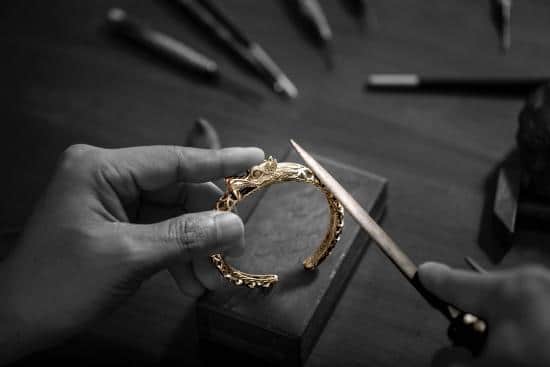
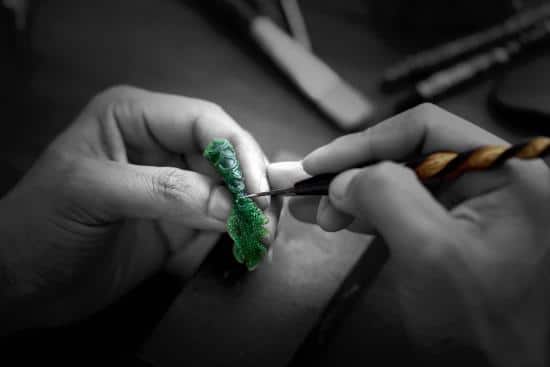
Steeped in history and ancient cultural beliefs, each piece reflects life in Bali from the spiritual to the everyday. The classic chain, which you have most likely seen, is 100% woven, recycled metal, inspired by the art of weaving seen all over Bali as decoration for celebrations, baskets, etc. It takes one hour to make one inch of chain by hand. You can see below, the bamboo column is decorated with woven strips of leaves like the bracelets they make, spiraling up like a serpent (there is also a serpent collection at John Hardy). One of the artists wove the palm leaf greenery around that column pictured with our host we spent the morning touring the property with. The Balinese dress is so beautiful. Below is one the design sketches of the classic chain weave.
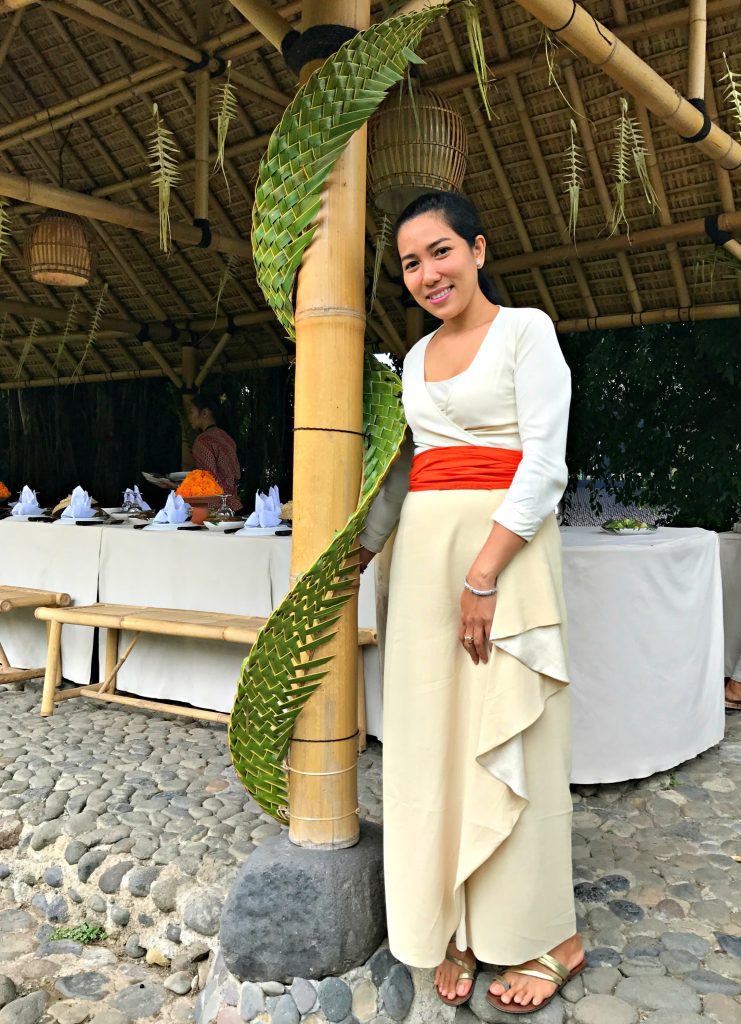
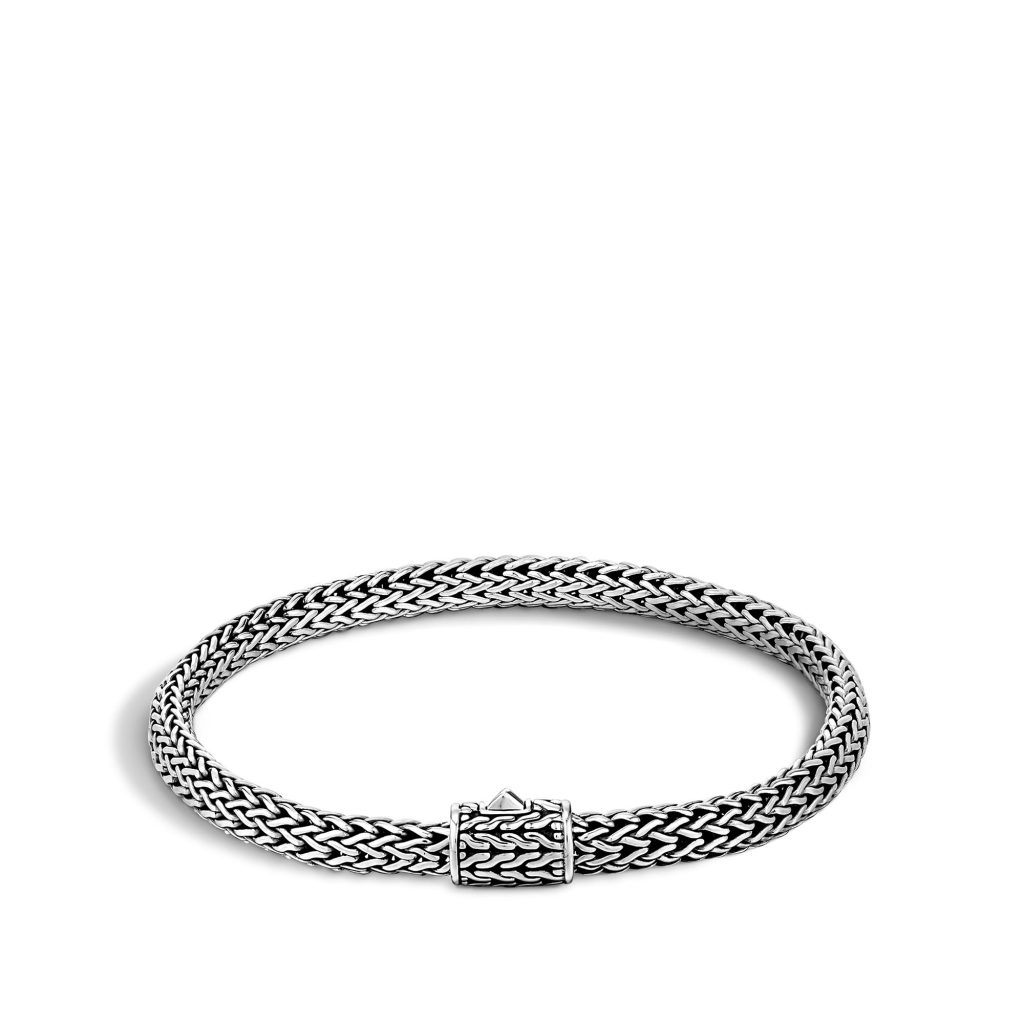

The Legends of the Naga collection is inspired by the Naga, the mythical water dragon, that lives in the mountains of Bali and descends the mountain to find his love the pearl. The Naga represents love, protection and prosperity in Bali. Watch this video with adorable illustrations depicting the story of the Naga. If you’ve been anywhere in Asia, you know the Naga, or some story of the dragon, is a positive, powerful creature in many Asian cultures. Below is a design sketch for a Naga piece with sapphire eyes and a special bracelet with a golden pearl from Lombok, an island off Bali. A love story expressed in jewelry, the Naga pieces that include pearls are very special, as this completes the entire story of the Naga and his love the pearl. It is said if you wear the Naga facing you, it will attract love. If you wear the Naga facing away from you, it serves to protect you. I even love the Naga Dome Ring which looks like the texture of the scales of the dragon’s skin. The black piece below is highly-prized, black mother of pearl.
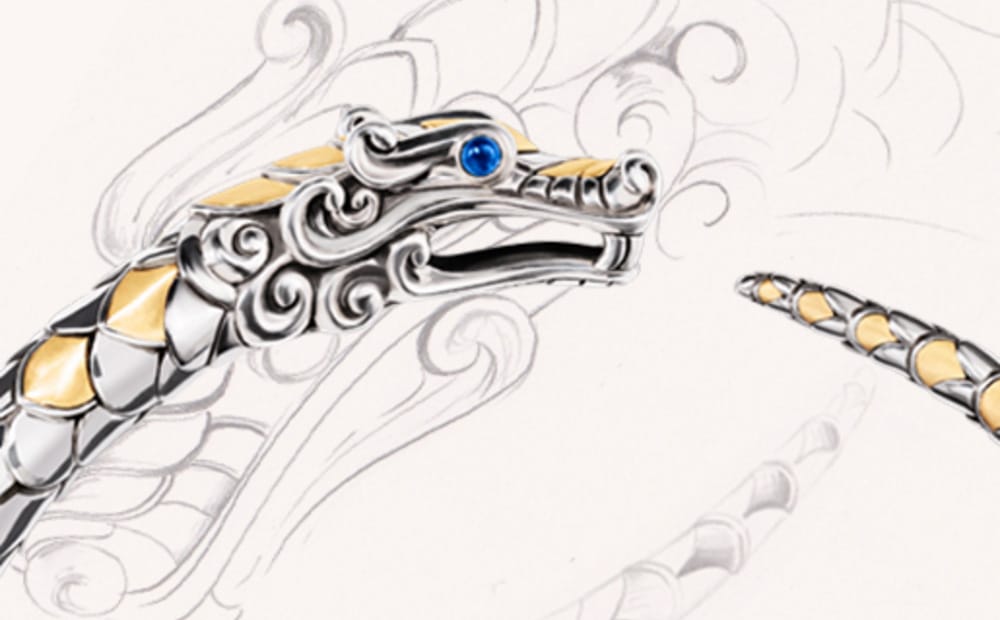
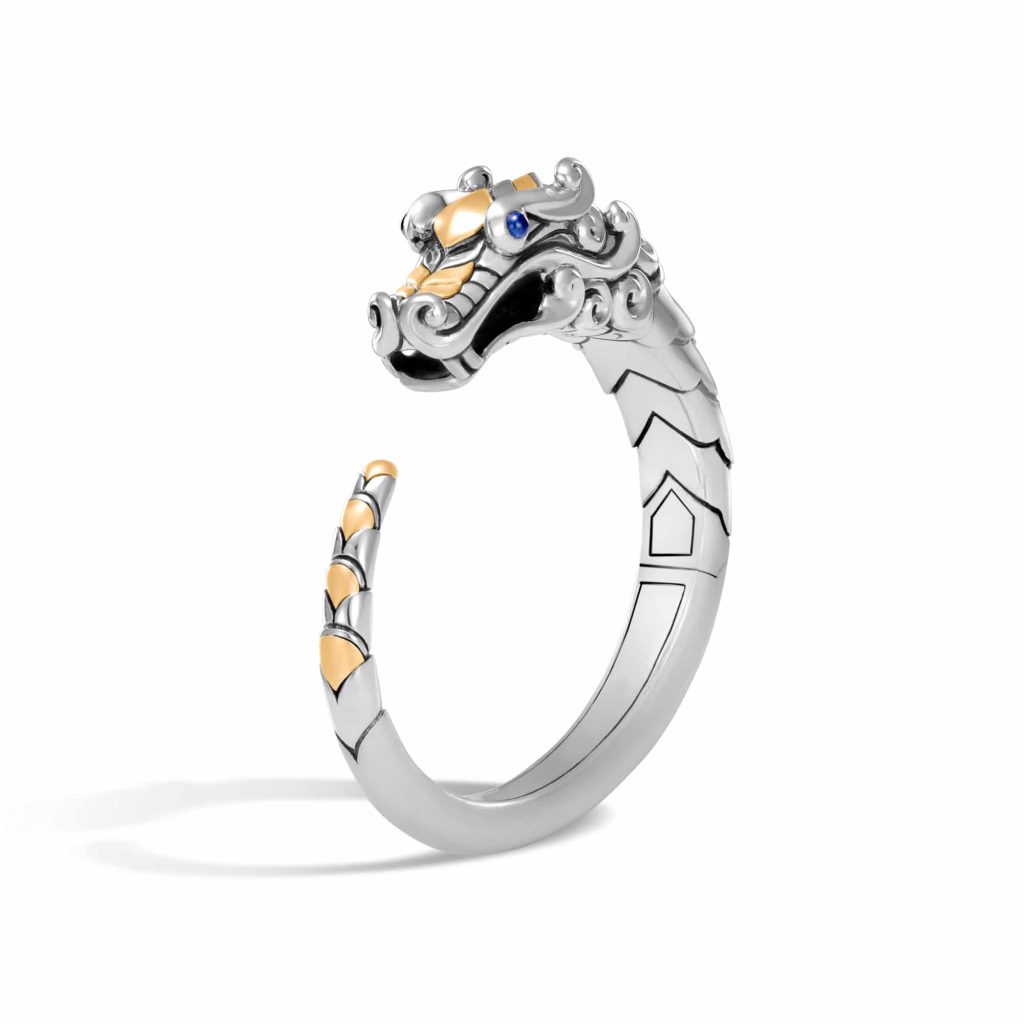
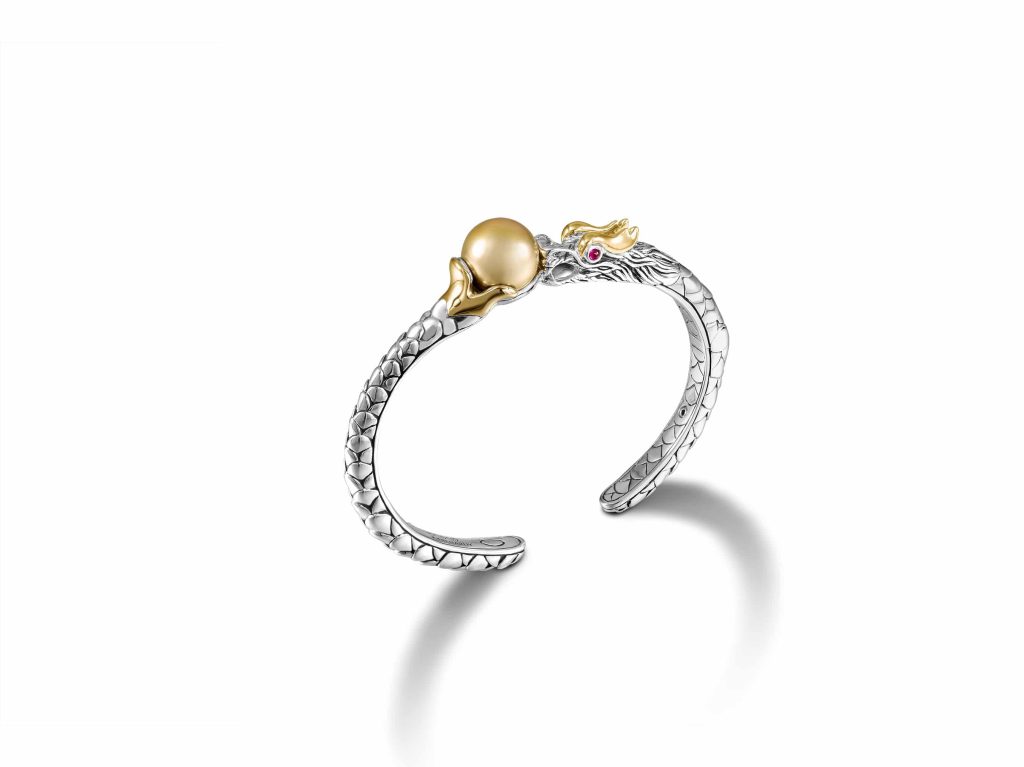
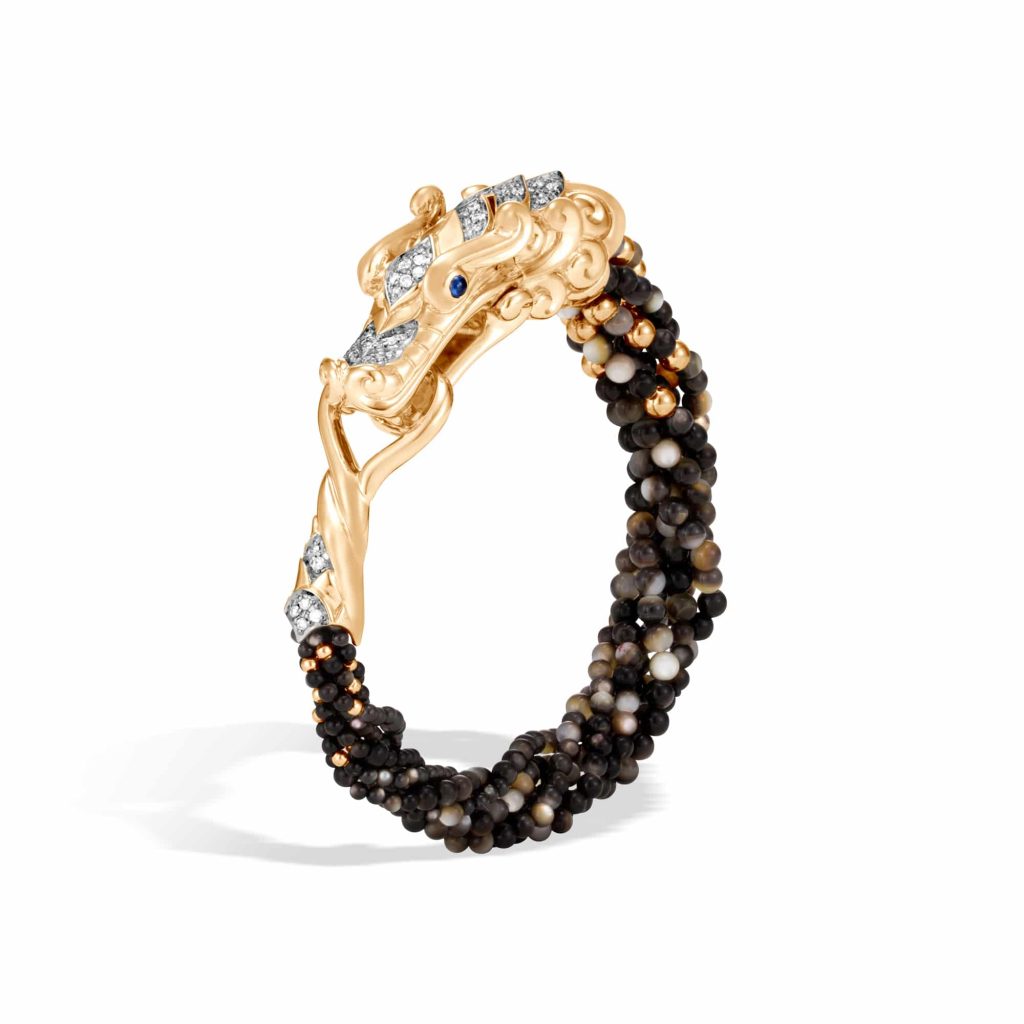
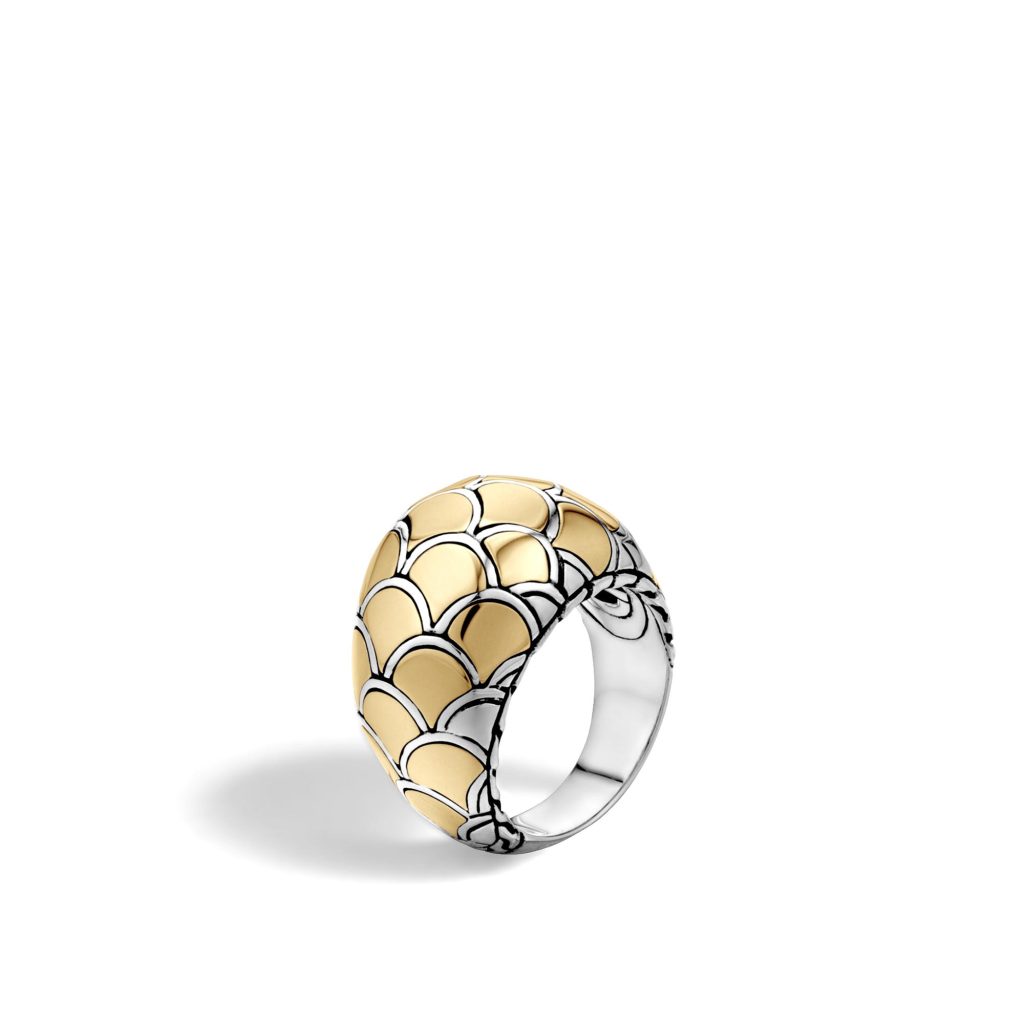
One of my other favorite collections is the bamboo collection. Not only is it the main building material used around the property, for each piece sold, the company plants a certain number of bamboo seedlings. If you look very closely inside each bamboo piece, the company has etched how many seedlings were planted from the purchase of that piece. You can clearly see the bamboo seedling stamp inside the silver piece. I almost bought the yellow gold bangle below but decided on the classic chain in the picture above in a silver and yellow gold combination. Because I love the design sketches so much, I’ve included a couple from the bamboo collection.

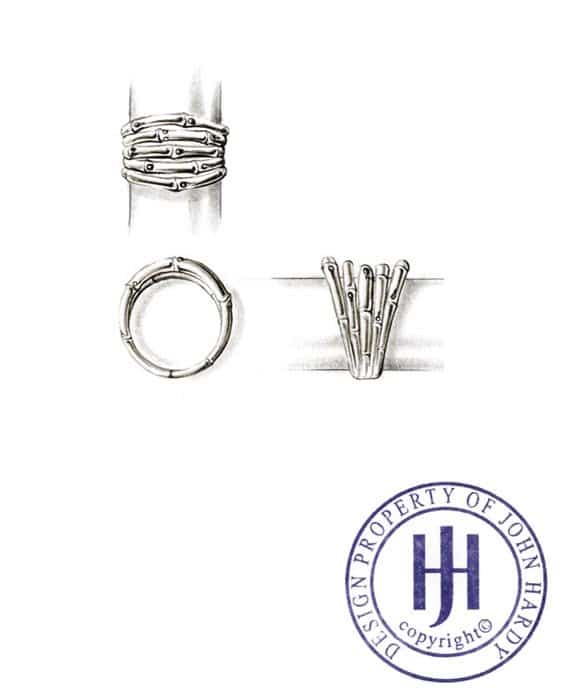
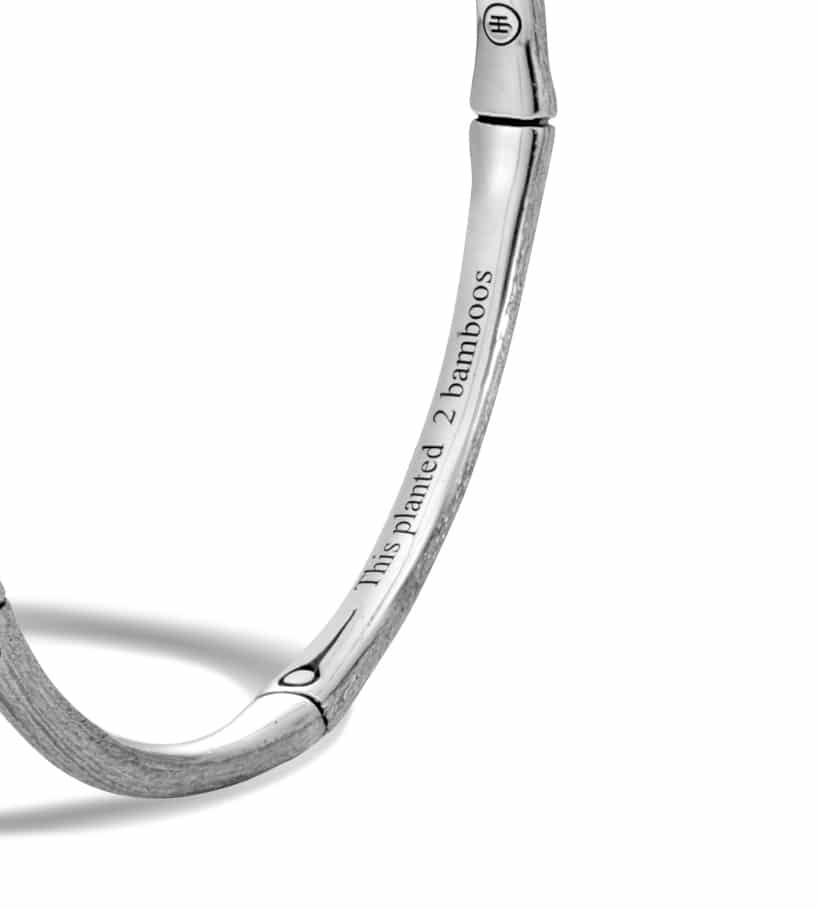
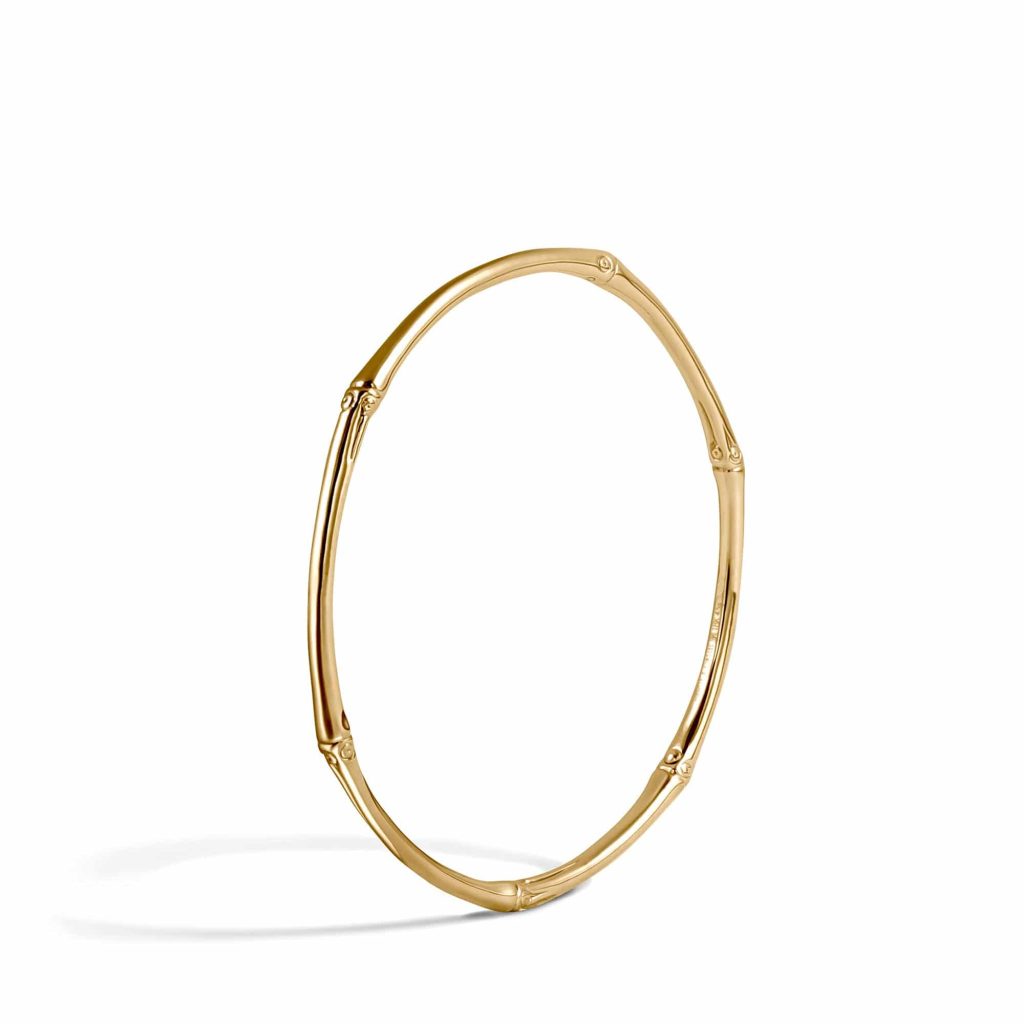
One of the other details that makes a John Hardy piece so special is the Ukian etching or carving on the inside of many of his pieces. These depict secret mythical stories that only the wearer sees and knows. Ukian is a traditional carving method in Bali, and you can see a similar method was used on the wall in the entrance hall picture below.
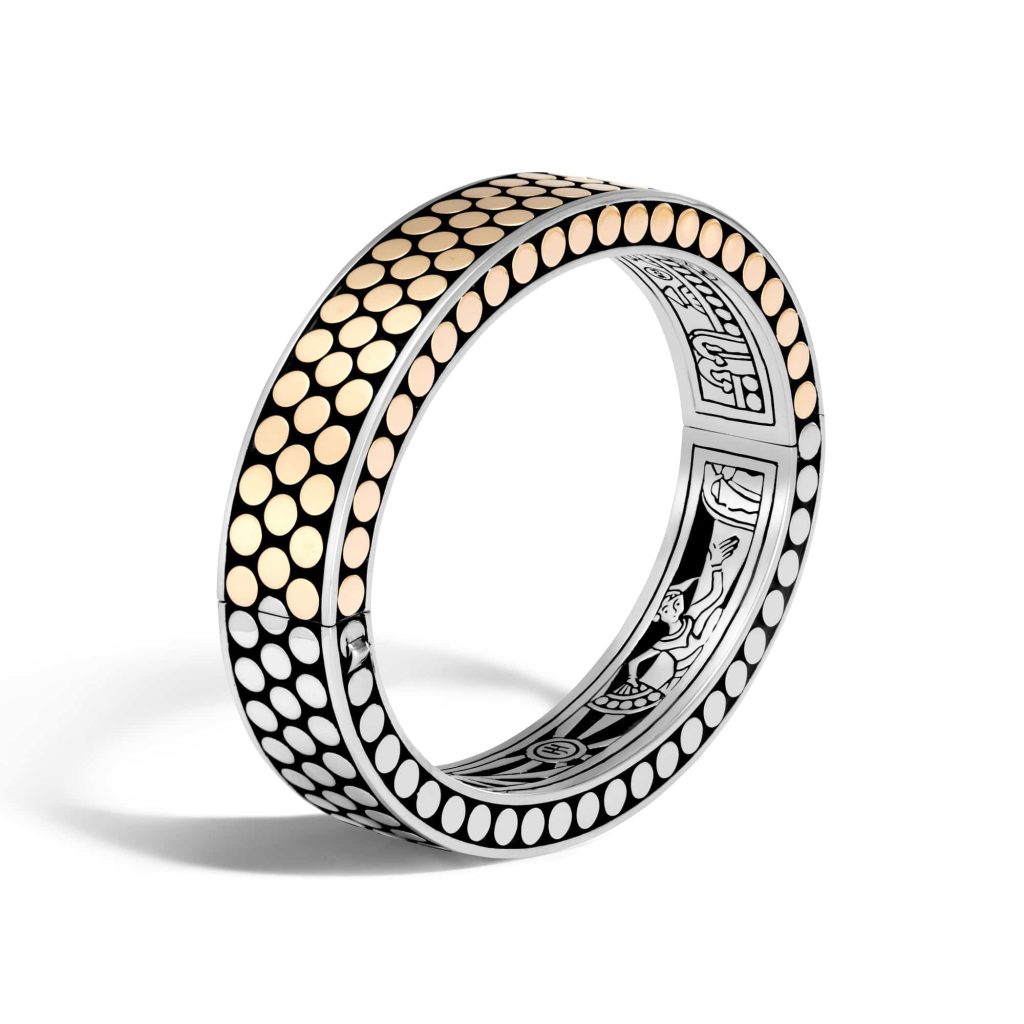
Upon arriving at John Hardy, one is greeted by the beautiful Balinese people and a refreshing lemongrass cooler in a bamboo cup with a lemongrass straw. Whenever possible, everything is natural at John Hardy.
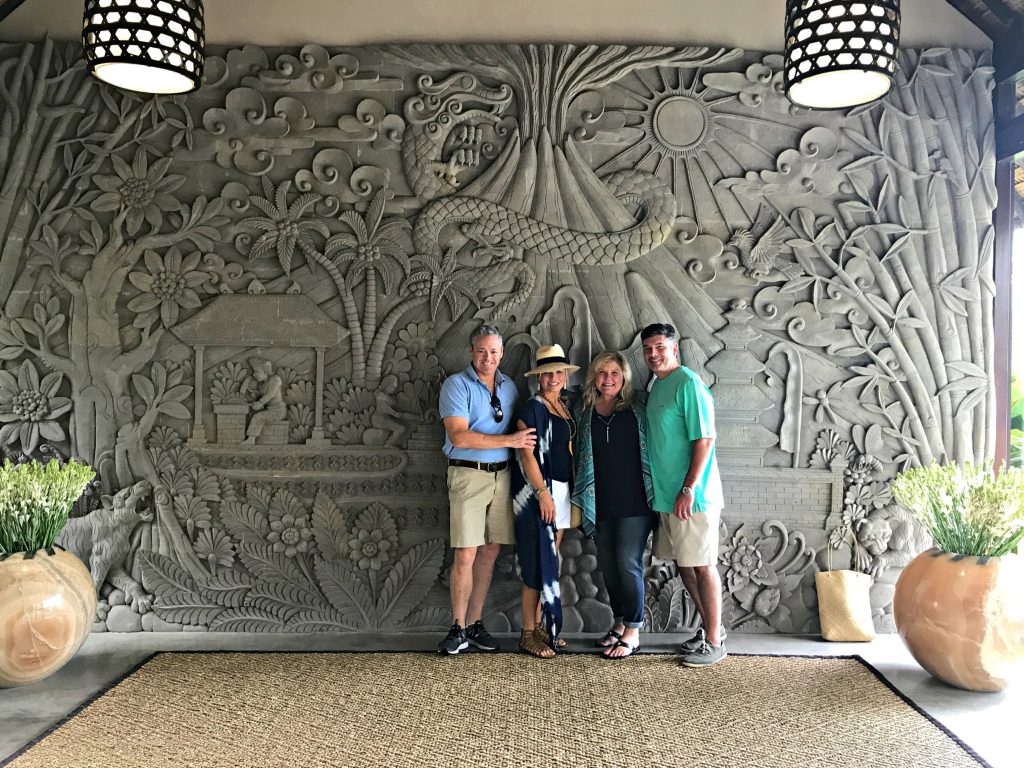
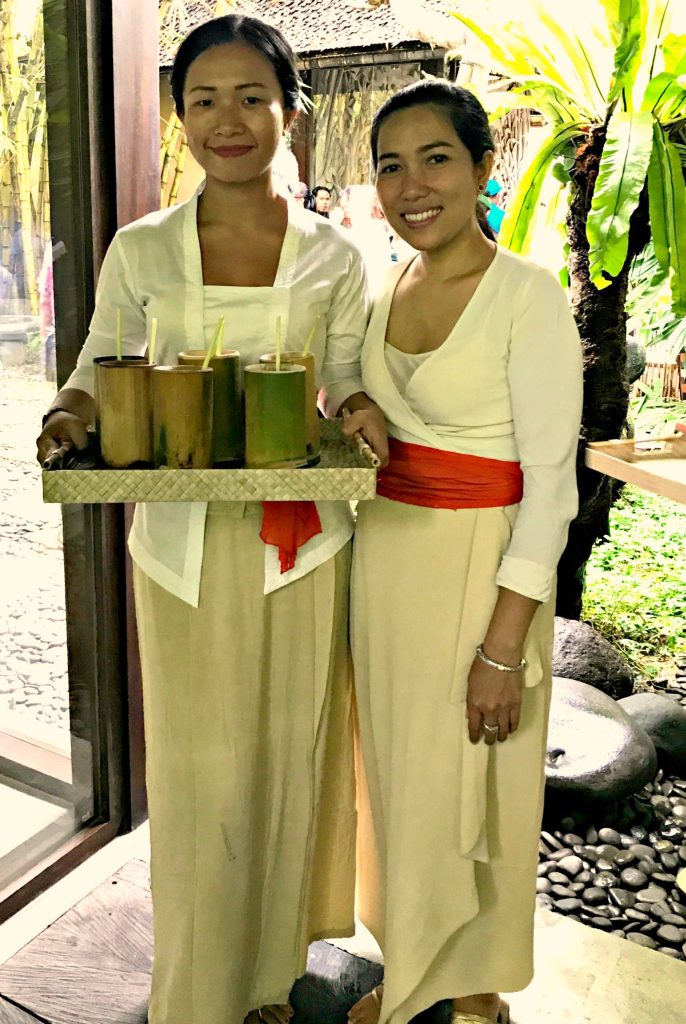
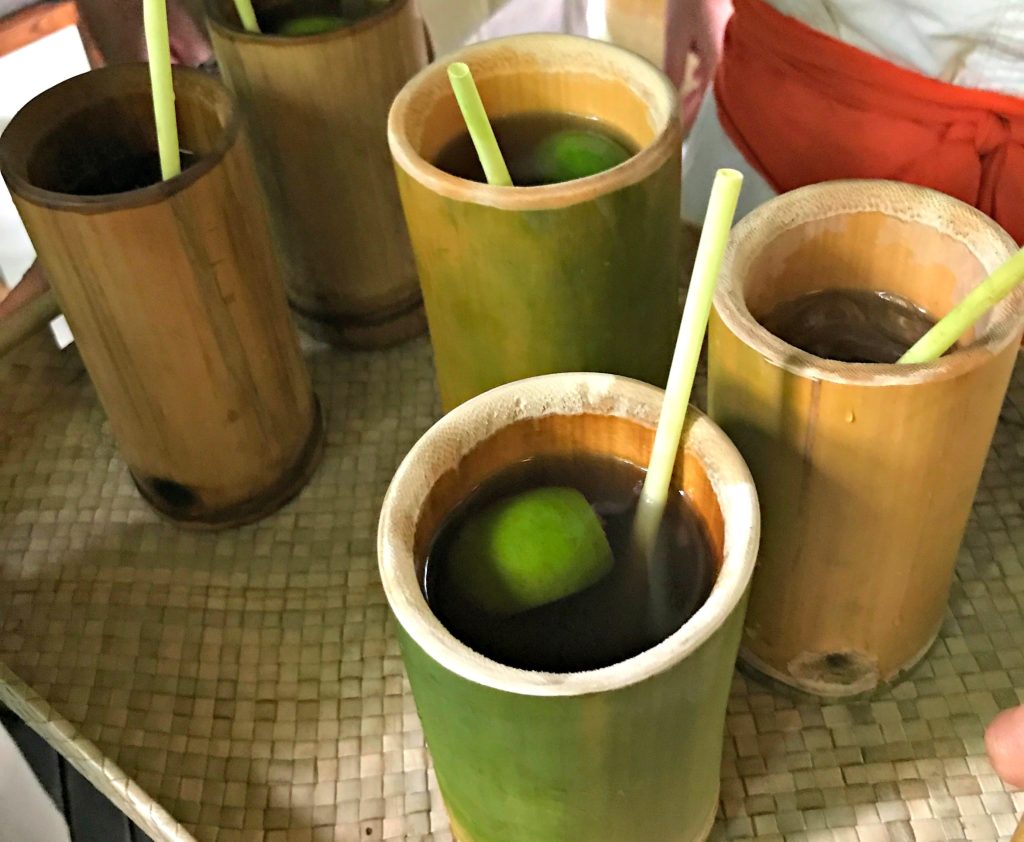
Design Studio
This building was also reclaimed and brought to the property. The designers work here in this light-filled space surrounded by rice and lemongrass. Pictures were not allowed inside the design studio to protect the designs they were currently working on. Each designer sits at a communal type work space, drawing and sketching new concepts.
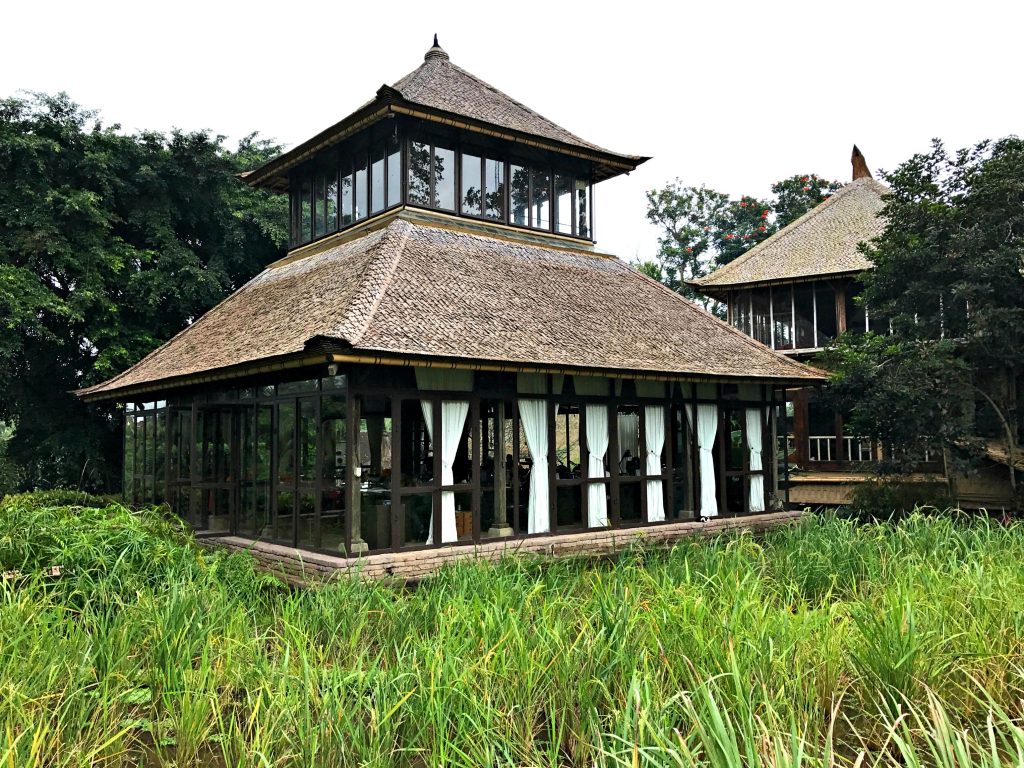
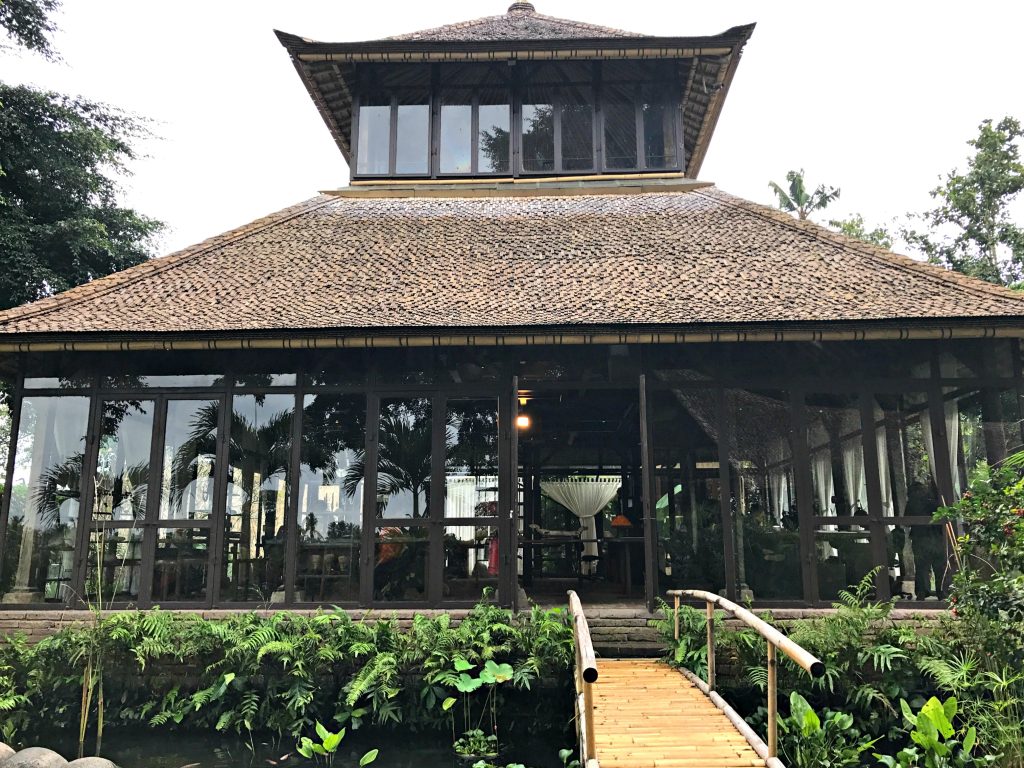
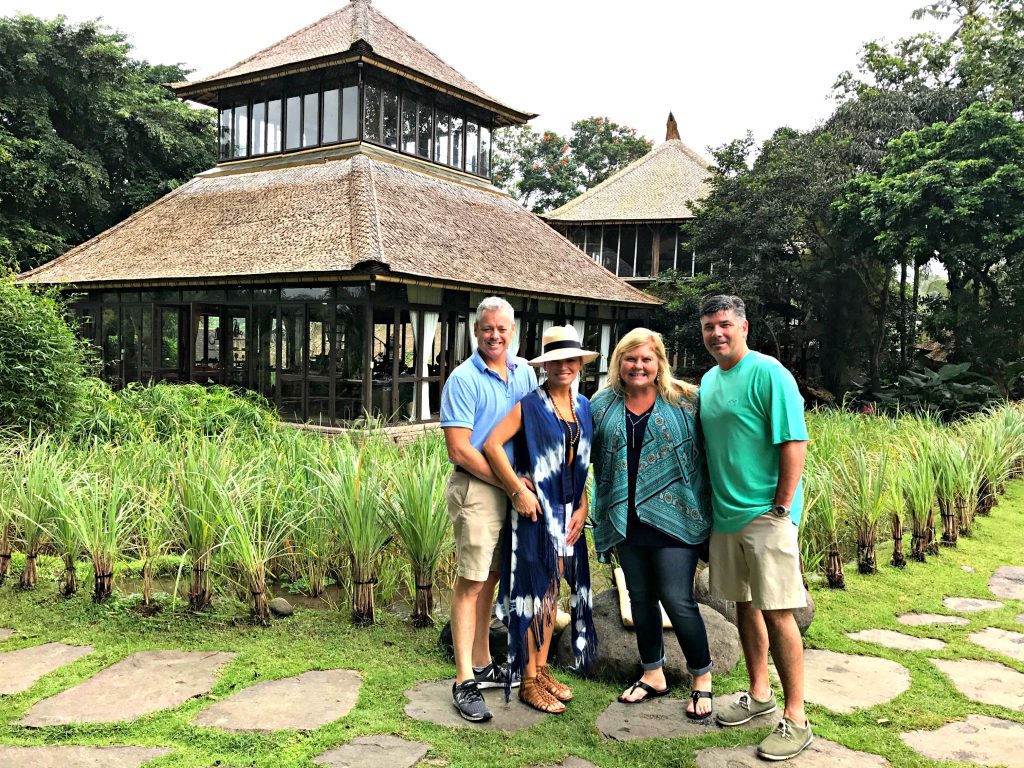
Lunch Pavillion
Each day the company provides lunch for all the employees in this outdoor bamboo dining room and has a kitchen onsite where they prepare rice and food from the land surrounding the workshop. They eat in two shifts, and guests are invited to dine on traditional Balinese fare with the designers and artisans.
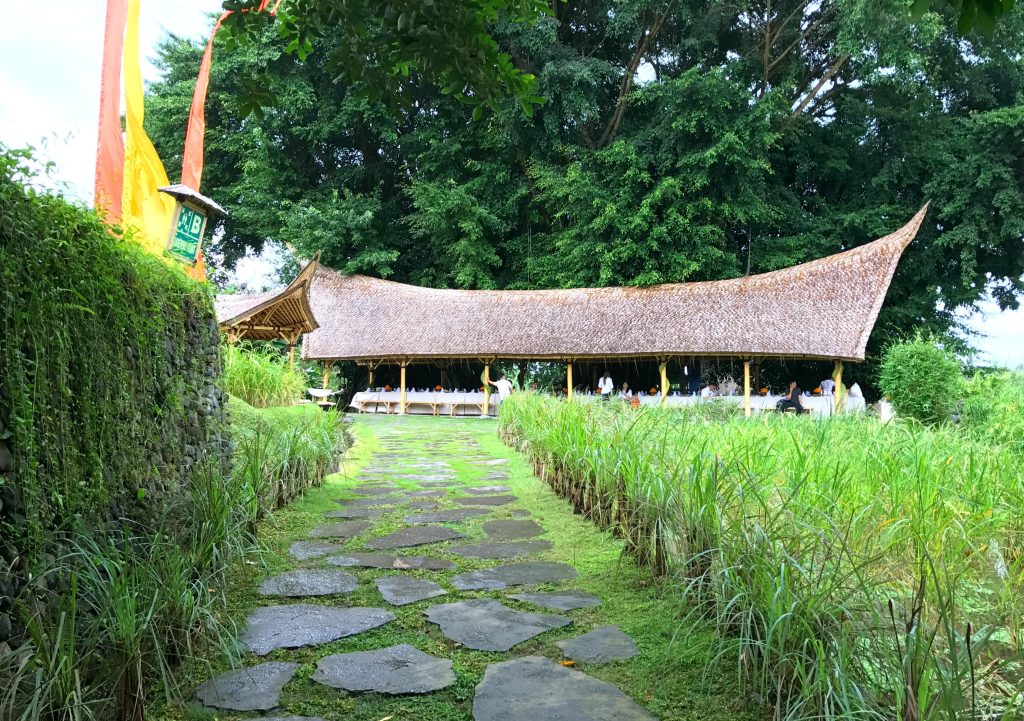
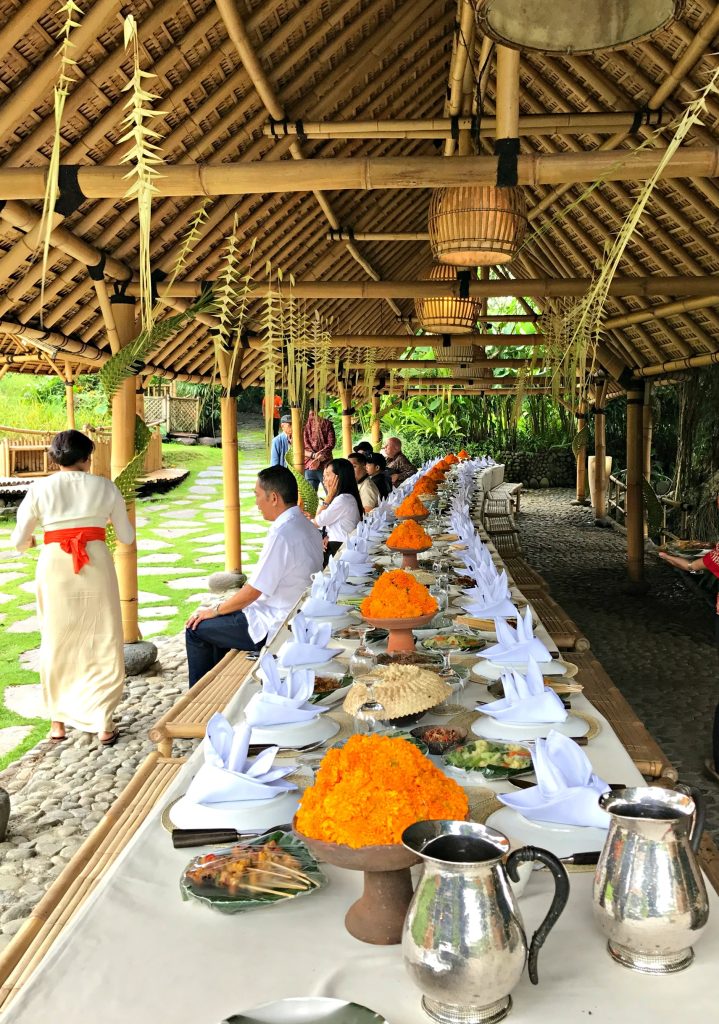
Workshop
You are not allowed to take pictures in the workshop to protect the production process, but having heard so many horrible stories about the treatment of people in workshops in Southeast Asia, we asked every question regarding their welfare. They work a standard 8-hour day, are paid a fair wage, get an hour for lunch, which the company provides, and so many people enjoy working there. We met two generations, a mother and daughter, currently working there together. Most are skilled in one step of the process and are masters at it, so that’s all they do, all day long. Seemed really tough to me. In the workshop, you have the opportunity to stand by the artisans, looking over their shoulders, while they work. The attention to detail is astonishing really. Later in the trip, we were told this is considered an excellent job for Balinese people, and they are treated very well here. I found this picture on DestinAsian of the inside of the workshop.
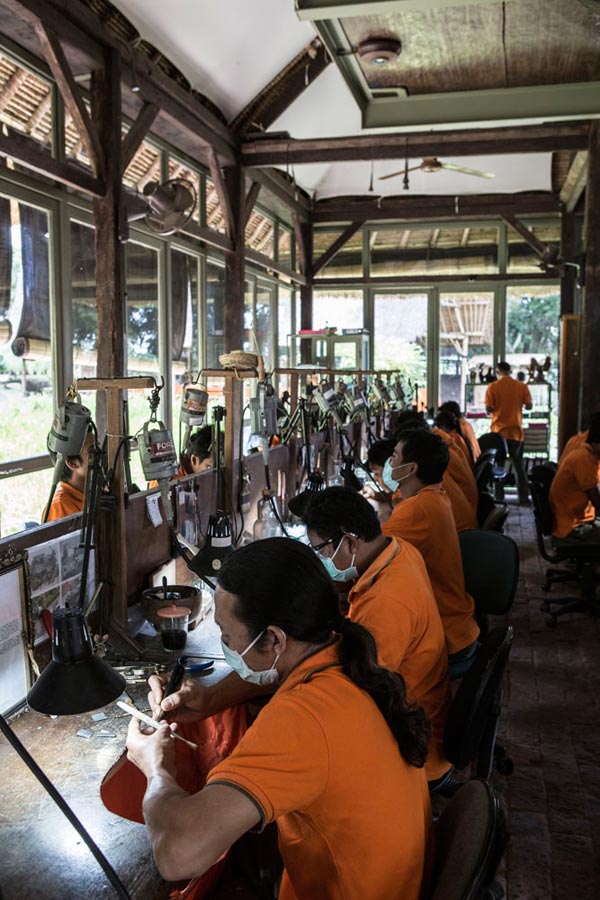
Showroom
The showroom, called the Kapal Bambu, is located in the building below. It’s highly sculptural and inspired by bamboo ships. The floor is open on each side and rice grows under the building inside the showroom. You can hear the trickle sound of water softly flowing all around the property, irrigating the rice and other plants. All the cases are built of bamboo and glass, and the bamboo roof shingles in the shape of a turtle shell were really interesting. With the light pouring in from the glass, the entire building had a spiritual quality to it. Love that bamboo bubble chair. too.
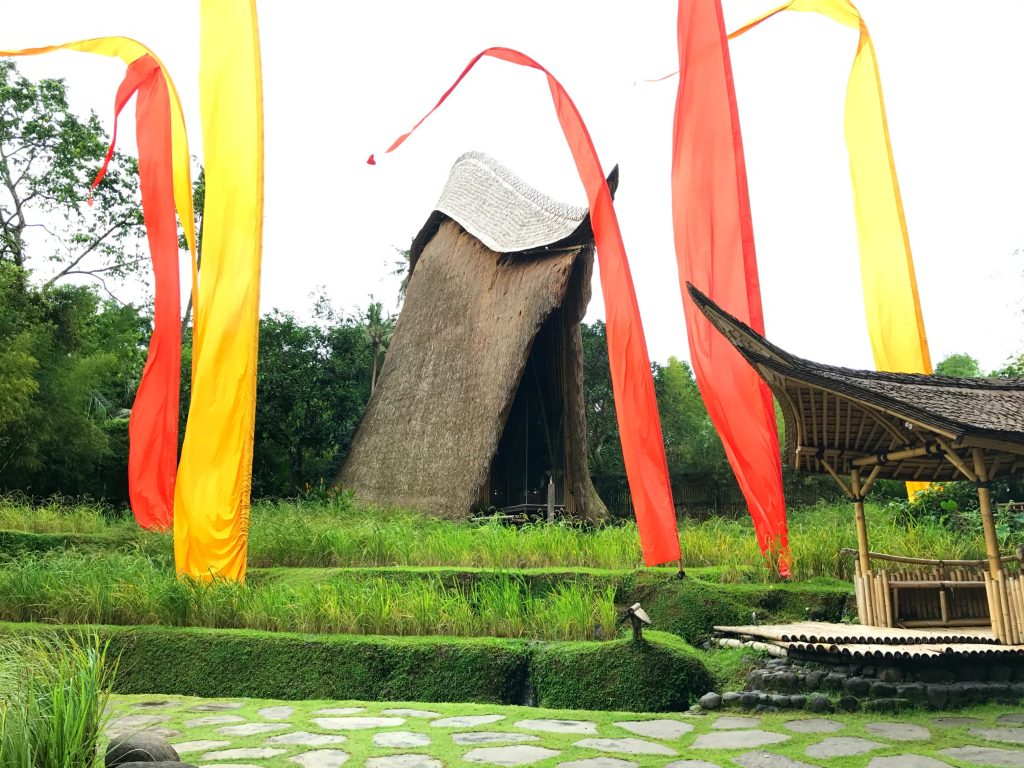
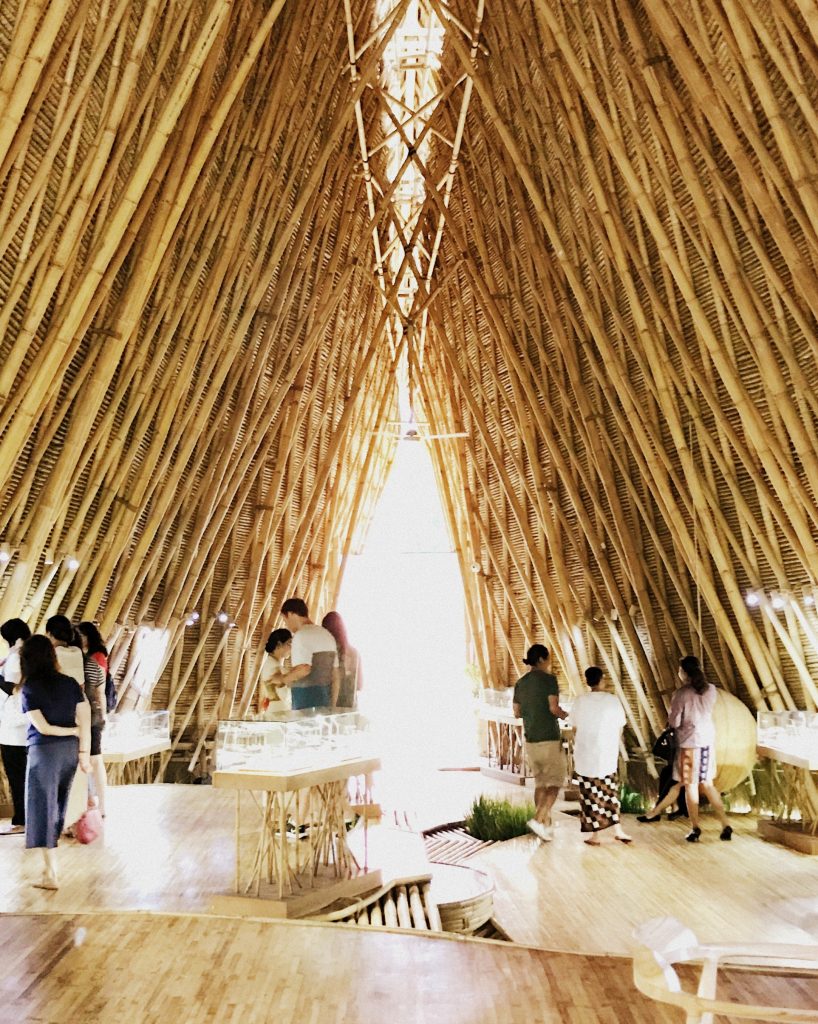
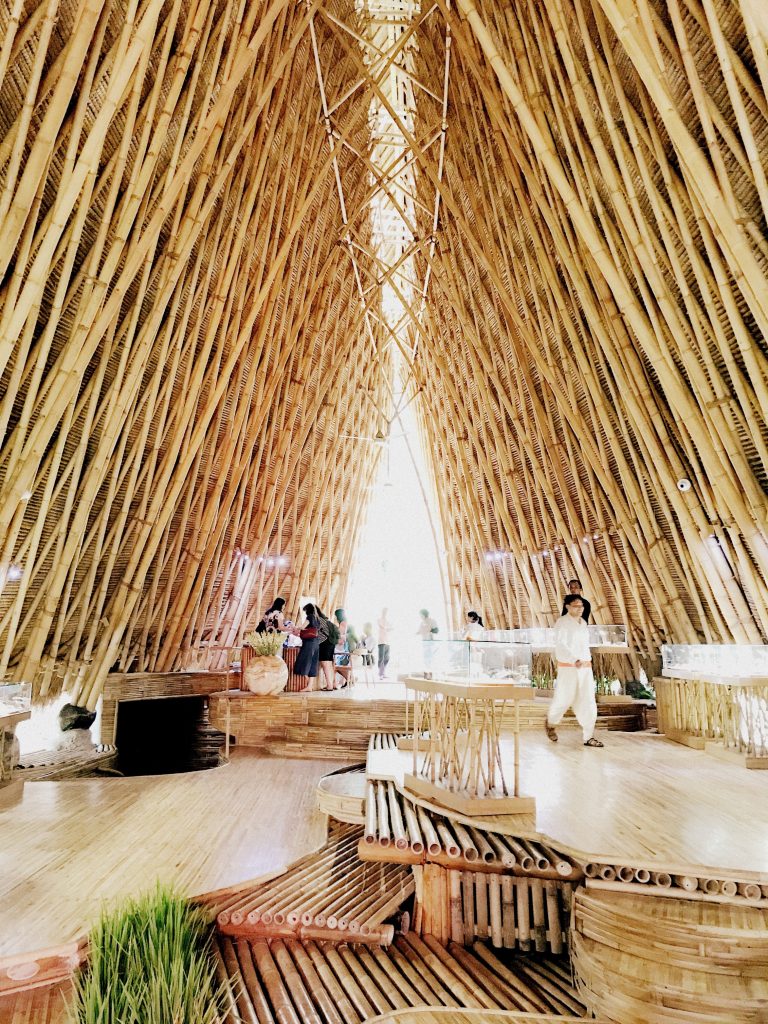
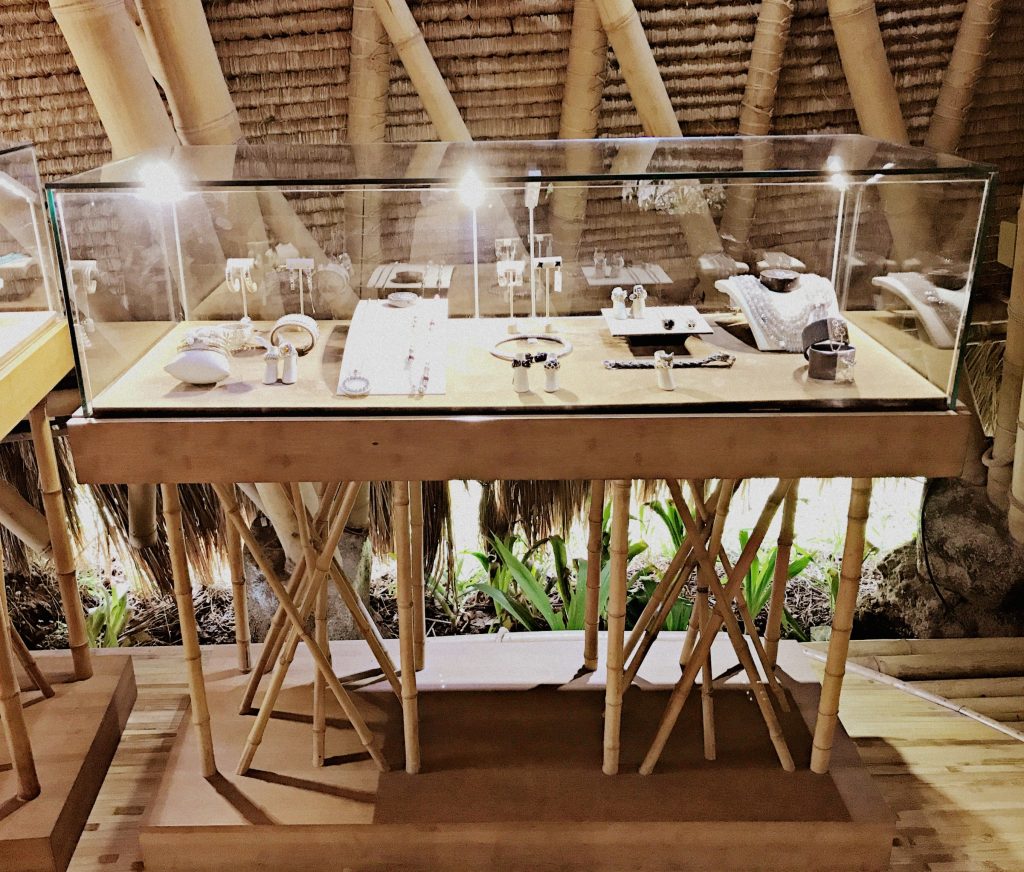
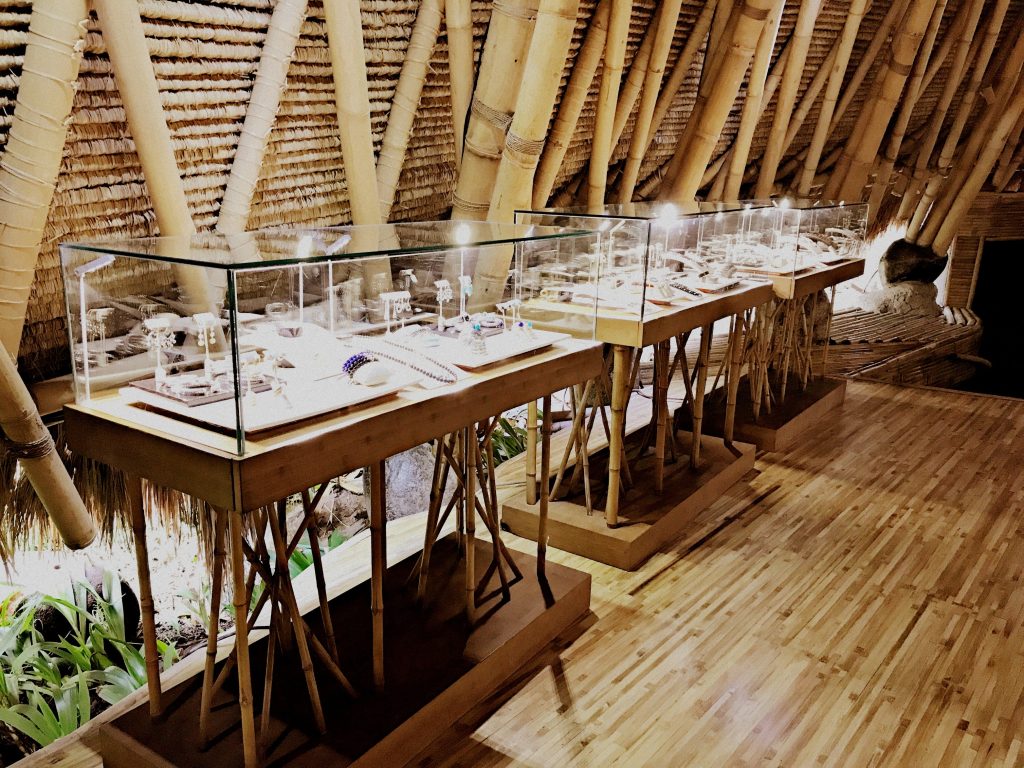
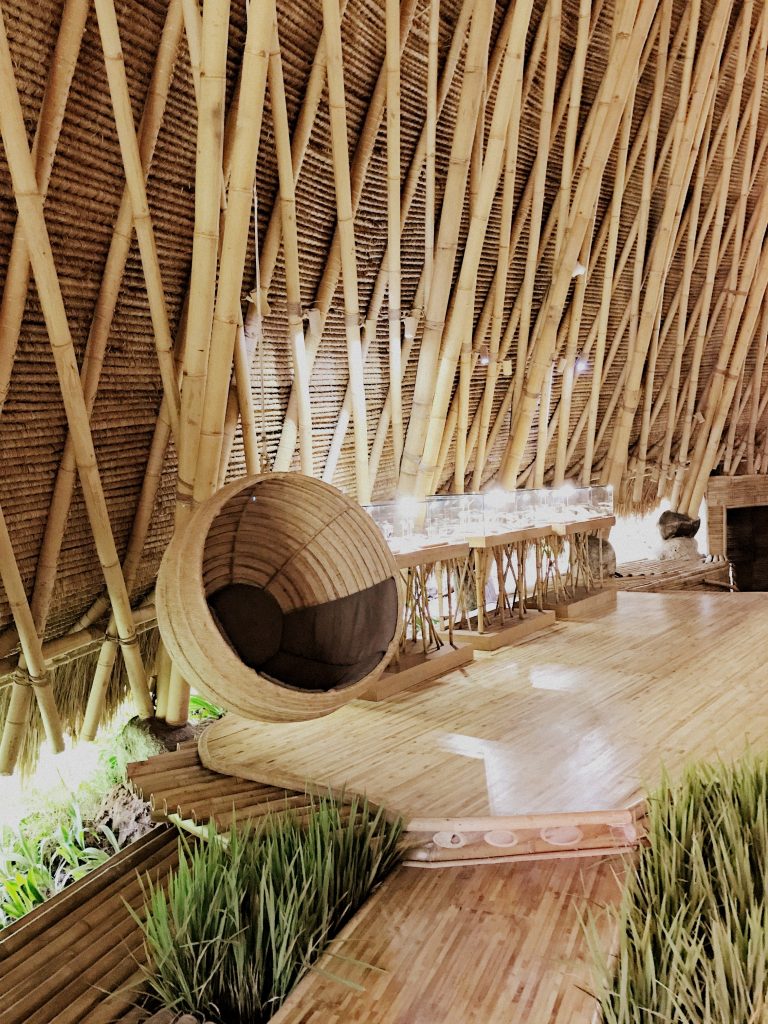
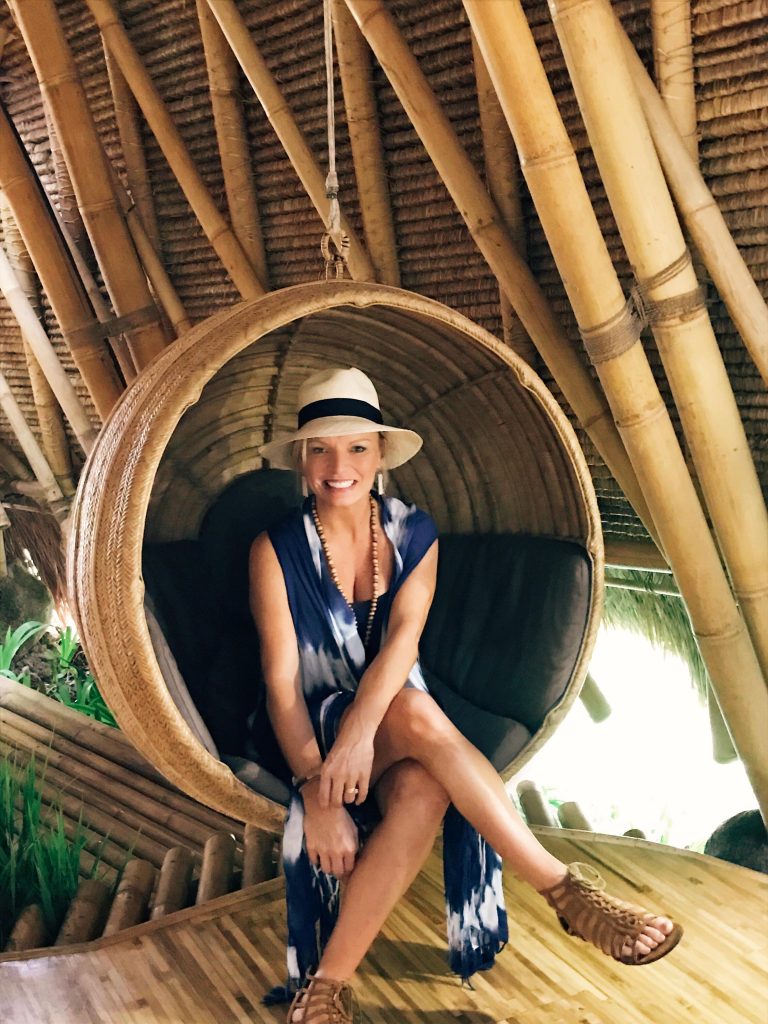
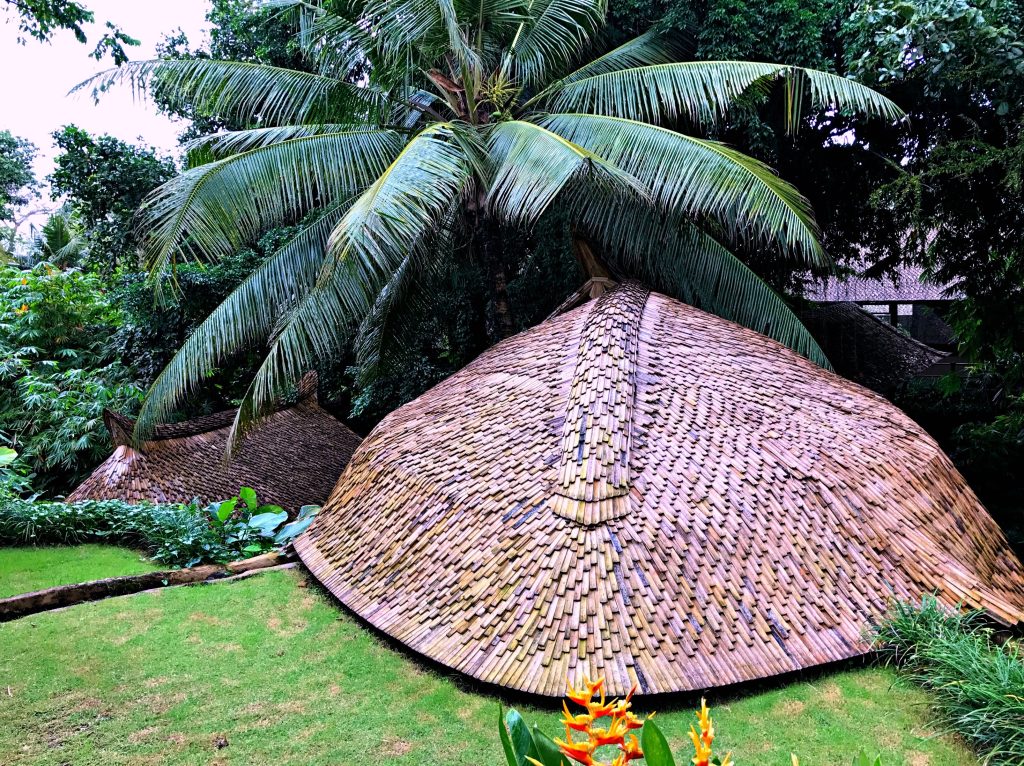
Temple
There is also a Hindu temple on the property for daily prayers and offerings, which is usually done three times a day. Marigolds are one of the most used flowers around Bali. You can see them on the table at lunch and arranged in a cone shape flanking the temple steps.
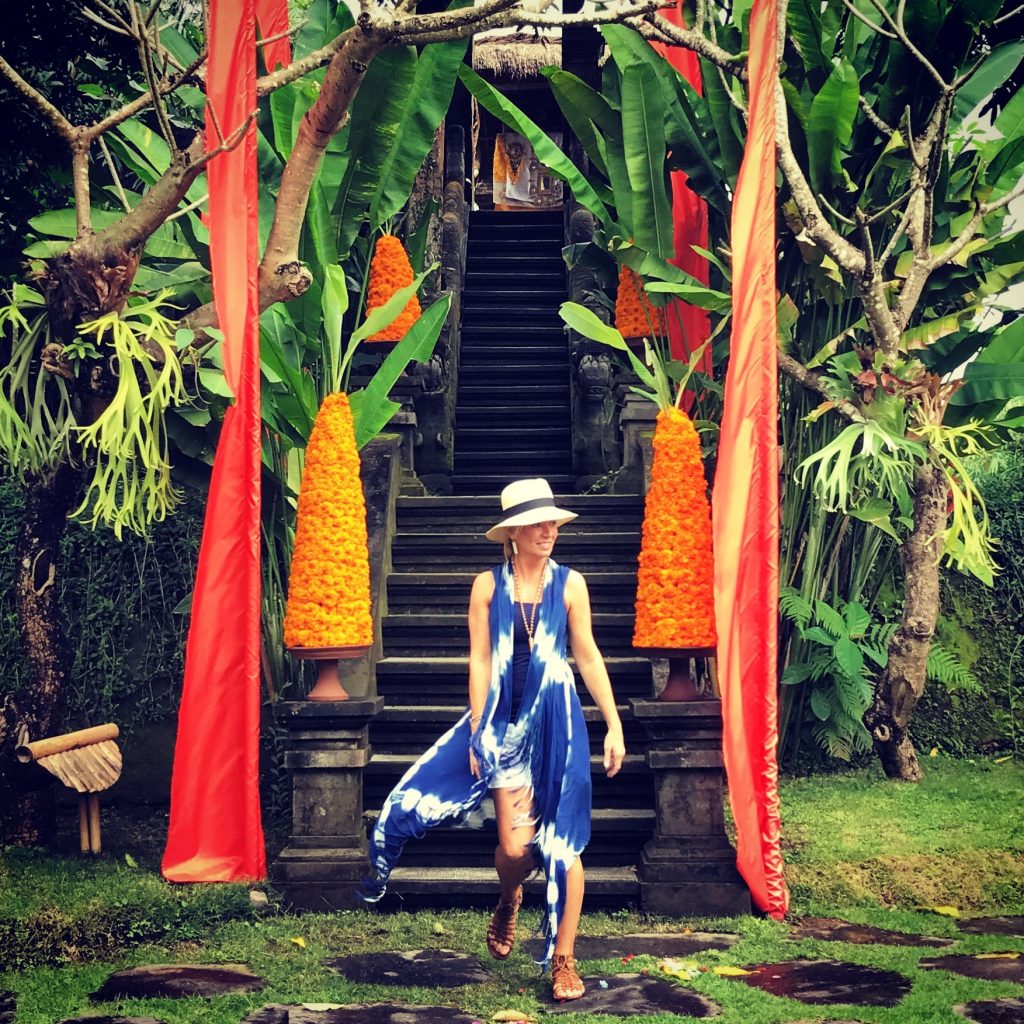
Because of the philosophy of this brand, the quality and craftsmanship of the product, and the amount of love, detail and beautiful, conscious, human energy that goes into each piece, John Hardy has won me over.
If you’re in Bali, you have to put this on your list. It was on of the best experiences we had.
xo,
Cassandra
